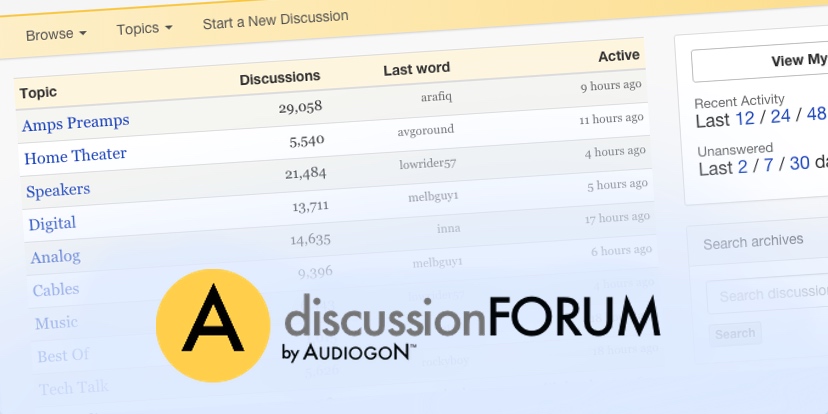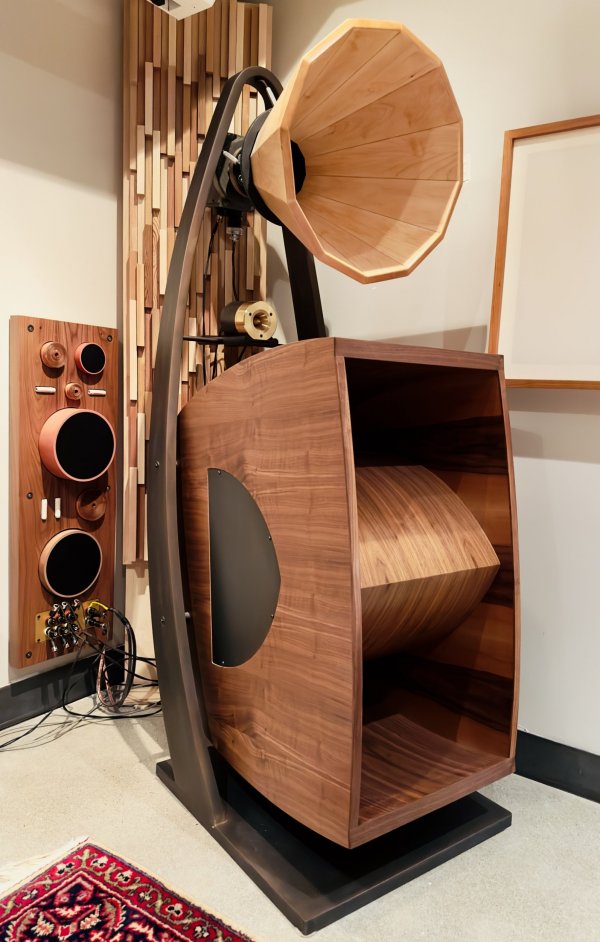So now the latest enhancements to my Altec A7 project.
The "Hiraga-style" crossovers I purchased from Pete Riggle include a circuit for the inclusion of super tweeters. That circuit is bypassed until a switch is engaged and the associated attenuator adjusted. Pete says that the inclusion of a JPL ST400 Super Tweeter facing forward in vertical alignment with the other voice coils helps the sound greatly (and even somehow improves bass definition). He sent me photos of his attached to an arched arm from the side of the bass cabinet holding the super tweeter over the compression driver high enough to clear the treble horns, and that arched arm held down with bricks or something similar. Now, I love the "old school" look of the Altec's as they are (albeit modified now with a new wooden exponential horn array built for me by Marcus Klug) and do not want to see some modern super tweeter mounted on an arm over the horns (or sub woofers along side for that matter either). In addition, I have high frequency hearing loss and tinnitus so what would be the point of super tweeters putting out a signal that I can't hear anyway (my suspicions verified, I believed, when I heard no difference between videos of before and after adding super tweeters that another Altec A7 enthusiast posted videos of).
Although I was ok with what I had done so far, my mate Hugo Cass convinced me it would be relatively inexpensive to try just to see so I purchased the two super tweeters (and some more Duelund tinned wire) and mentioned that I would follow up with you all once they were here and hooked up (see above).
As mentioned, I don't like the looks of the super tweeters mounted above the horns on crude arms so enquired on the internet (as one does) about pointing the super tweeter so that the signal bounces off the ceiling or the back wall instead (so that it is hidden out of sight behind the treble horns). I found a video where a man shows how forward facing super tweeters can be quite problematic. He had a small bookshelf speaker and a super tweeter, using a single cap for crossover duty. Signal went through a frequency monitor and the db at each frequency of each speaker was plotted on the screen for easy appreciation. At first he showed the frequency of the bookshelf speaker by itself, pretty flat. Then the speaker voice coils of both the book shelf and the super tweeter were aligned as close to vertical alignment as possible and that caused some uneven waves in the main speaker. As he moved the super tweeter back in small stages the monitor revealed big disruptions including large sections of no signal and he explained they were a result of cancelation. Then he suggested pointing the super tweeter backwards or up and bouncing the sound from it as the best solution as then the delay would prevent any cancelation and the phase difference, if perceptible, easily corrected by a nudge one way or the next. As my ceiling is angled upward towards the centre of the room I placed the super tweeters, magnet down on a circle of dense computer component foam, facing up.
Because of my hearing deficit (and absolute belief that I would hear no difference), I had my wife (whose high frequency hearing is much better than mine) come in and audition each stage of the addition and report what, if anything, she heard.
I had everything hooked up but the super tweeter circuit turned off. I played the first part of a track for her to listen to. I then turned on the super tweeter circuit switch, but did not add volume (I was checking to see if some of the treble I had before was now lost to a new circuit). I replayed the first part of that same track. She thought there was something different, but could not discern what, but said it was better? I then turned up the volume to the 9 o-clock position on each super tweeter circuit on the crossover and had her listen to that same record cut. She smiled and said it was much better. I was sitting way off to the side of the room, but had a vague sense of something being different too. After she listened to the rest of that track she exclaimed, "here, you sit here and listen".
I sat there in the best listening position and listened to the rest of that record, then the next, and then another. I was literally blown away. The instruments, voices, everything sounded more "real", it had greater "presence" too. With one live jazz recording, I was not only in the same room but in the second row. Those recordings that were better in timbre, balance and air. So what was going on? This must be what people mean when they talk about the "psychoacoustic" effects of analogue playback of frequencies above the range of normal hearing. I looked it up (internet again), and found that recording studios sometimes add an EQ boost between 30-40 kHz which causes an increase in "slew rate/rise time", which is thought to add dimension and clarity to sound.
I am quite pleased with the sound now, but will not add a video of it for the following reason; as I said before, I could not discern any difference when another group member submitted videos of music played over his Altec's before and after the addition of super tweeters. My first belief as to the reason (as I stated) was because of my high frequency hearing deficit, but now believe it was because the analogue to digital converter in cellphones limits frequency a good deal below 20 kHz (higher frequencies saved for bluetooth signals I read) so that even if your computer had a DAC capable of reproducing frequencies in the 30-40 kHz range, those frequencies (from the super tweeter) would not have been recorded on the cellphone.
I am hoping that my Altec A7 adventures will be of interest to some readers out there. And if I am mistaken in some of my assumptions, I am sure someone will soon sort me out.








